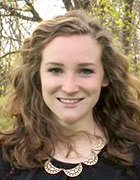
sakkmesterke - stock.adobe.com
Singtel and NUS claim quantum breakthrough
Researchers from Singtel and the National University of Singapore have succeeded in coordinating the paths of photons across a fibre network to drive wider adoption of quantum key distribution
A group of researchers from Singtel and the National University of Singapore (NUS) has demonstrated a new technique to advance quantum key distribution (QKD) that can be used to secure communications between parties.
QKD is a protocol that transmits light particles, or photons, over a network, so that two communicating parties can agree on and generate an encryption key to establish a secure communication channel.
In a statement, the researchers said they had succeeded in coordinating the travel of a pair of photons – one for each party – through different fibre network paths, controlling the photons’ arrival times precisely.
Without this technique, the photons may get out of sequence, making it difficult for both parties to agree on an encryption key. The breakthrough was demonstrated over Singtel’s fibre network, paving the way for wider QKD adoption and future commercialisation.
QKD is resistant to all types of computational hacks, including next-generation quantum computing threats. Any attempt to eavesdrop will increase the error rate of the photon sequence. This alerts the two communicating parties to an intrusion, so they can abort the session and start a new one.
Following their success, the researchers are now working on actual use cases where quantum-resistant secure communication is needed to provide long-term security in government, banking and military applications.
In future, QKD hardware could even be integrated with the internet to develop security systems for online payment services such as internet banking and online shopping.
As the smooth photon pair navigation enables high-precision clock synchronisation, this discovery can also be deployed in time-critical operations such as real-time analytics and financial trading.
“The breakthrough achieved by the NUS-Singtel Cyber Security R&D Lab not only strengthens our defences in a new cyber reality where threats are becoming more sophisticated, but it also positions Singapore as a hub for global QKD research,” said Bill Chang, CEO of Singtel’s group enterprise business.
Read more about quantum computing
- Industry experts predict it will take 10 years for quantum computing to become a reality, but Microsoft believes it has the edge to get there in five.
- Volkswagen Group demonstrated how it was working with D-Wave to research uses for quantum computing.
- Atos has made a quantum computing simulator available for sale so that organisations can test out the algorithms of the future.
- A top European CIO is urging the security community to prepare for quantum computing to ensure their encryption processes are ready in time.
Alexander Ling, principal investigator of the project at NUS, said the positive results indicate that current commercial fibre networks are ready for QKD. “This technology opens up many exciting possibilities for users that require strong and long-term security for their communication,” he added.
The project, conducted in Singapore, is driven by the NUS-Singtel Cyber Security Research and Development Laboratory that was set up in 2016 under a public-private partnership supported by Singapore’s National Research Foundation.
Elsewhere in Asia-Pacific, scientists at the University of Melbourne in Australia have simulated the power of quantum computing on supercomputers to crack a mathematical problem that would have required the memory capacity of more than a billion laptops to solve.
Quantum computing uses qubits represented by atoms to encode and process data in multiple states to solve a problem, while “classical” computers do so through binary bits represented by ones and zeros.
Led by Lloyd Hollenberg, deputy director of the university’s Centre for Quantum Computation and Communication Technology, the Melbourne scientists simulated the output of a 60-qubit quantum computer.
Conducted at the Pawsey supercomputing facility in Perth, the simulation would have required up to 18,000PB of classical computer memory.










